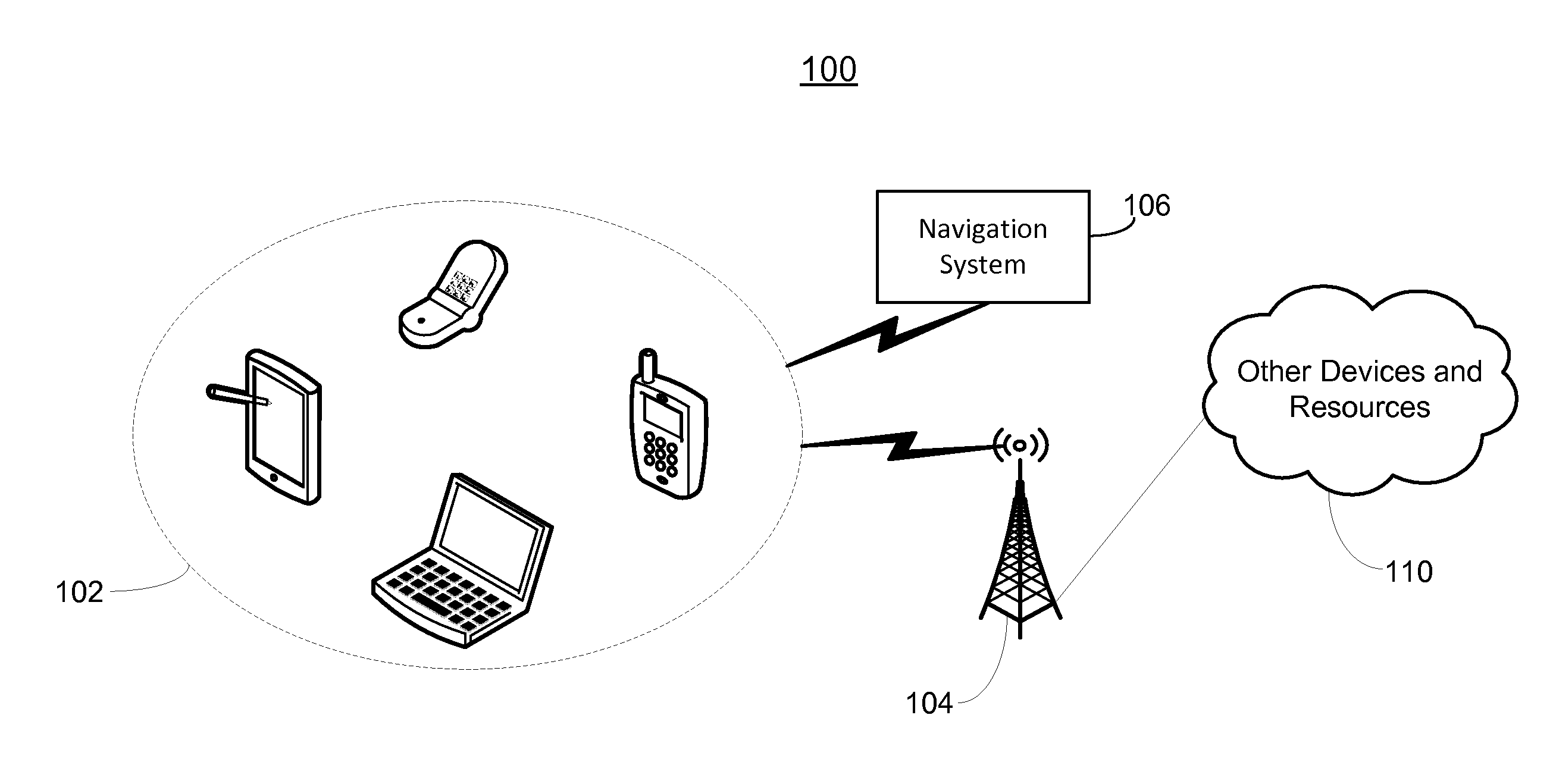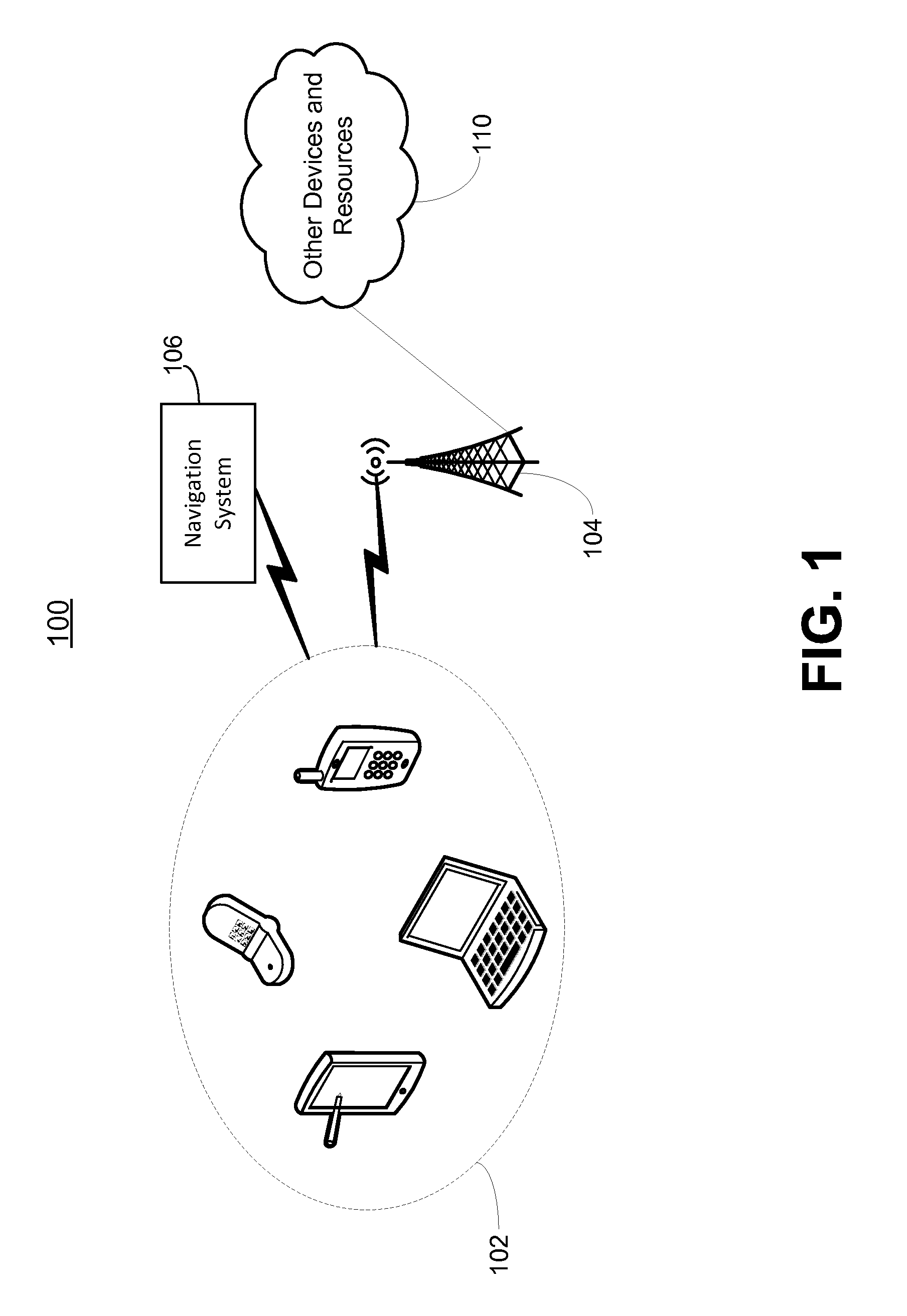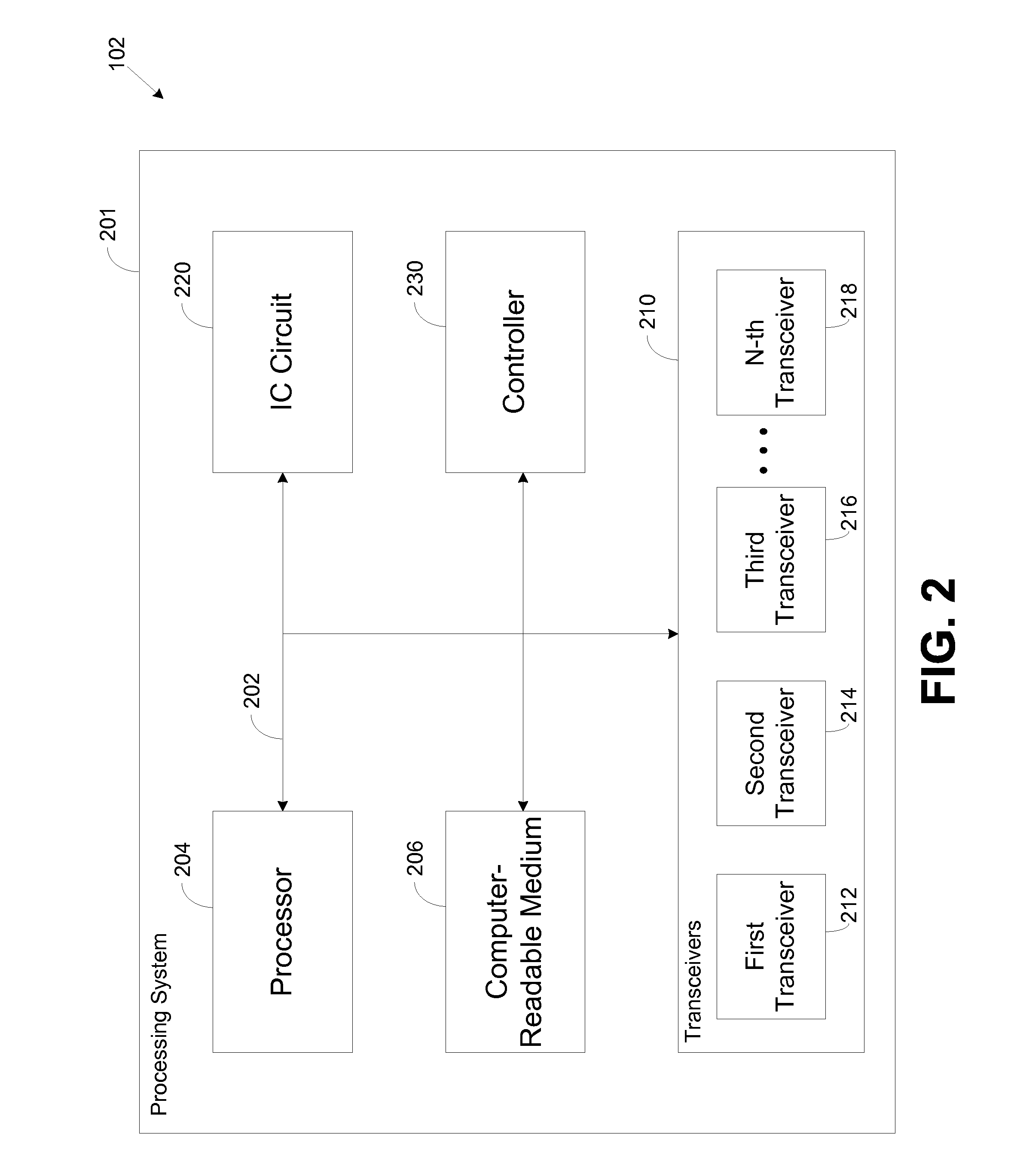Active interference cancellation in analog domain
a technology of active interference and cancellation system, applied in the direction of transmission, electrical equipment, etc., can solve the problems of only showing limited cancellation performance of aic in bb, interference to the receiving radio, and coexistence problems, so as to reduce interference
- Summary
- Abstract
- Description
- Claims
- Application Information
AI Technical Summary
Benefits of technology
Problems solved by technology
Method used
Image
Examples
Embodiment Construction
[0046]Various embodiments relate to methods and systems for cancelling interference produced by multiple radios (transceivers) operating on the same, adjacent, harmonic / sub-harmonic frequencies, or intermodulation product frequencies. In particular embodiments, an interference-cancellation system is adaptable for different radio combinations. For instance, for a co-existence issue caused by a first combination of radios, the transmitting radio (e.g., WiFi) may be selected for an input of an interference cancellation (IC) circuit and the receiving radio (e.g., Bluetooth) may be selected for the output of the IC circuit. For a co-existence issue caused by a second (different) combination of radios, the transmitting radio (e.g., WiFi) may be selected for the input of the IC circuit and the receiving radio (e.g., LTE band 7) may be selected for the output of the IC circuit. It should be noted that the terms cancellation (as in interference cancellation) and variants thereof may be synon...
PUM
 Login to View More
Login to View More Abstract
Description
Claims
Application Information
 Login to View More
Login to View More - R&D
- Intellectual Property
- Life Sciences
- Materials
- Tech Scout
- Unparalleled Data Quality
- Higher Quality Content
- 60% Fewer Hallucinations
Browse by: Latest US Patents, China's latest patents, Technical Efficacy Thesaurus, Application Domain, Technology Topic, Popular Technical Reports.
© 2025 PatSnap. All rights reserved.Legal|Privacy policy|Modern Slavery Act Transparency Statement|Sitemap|About US| Contact US: help@patsnap.com



